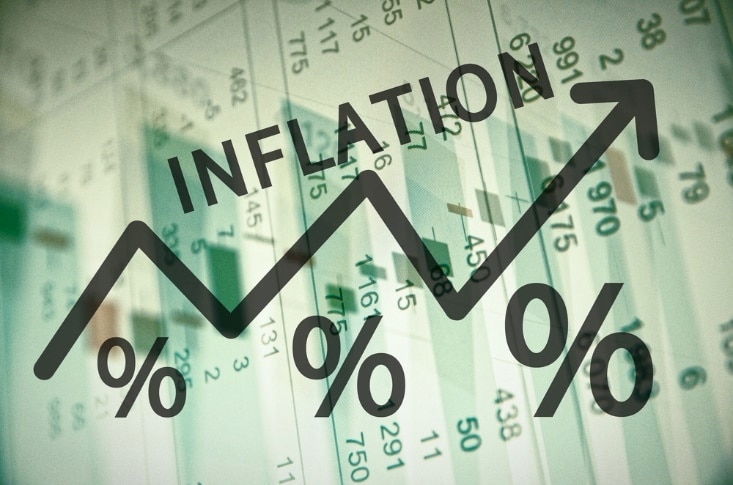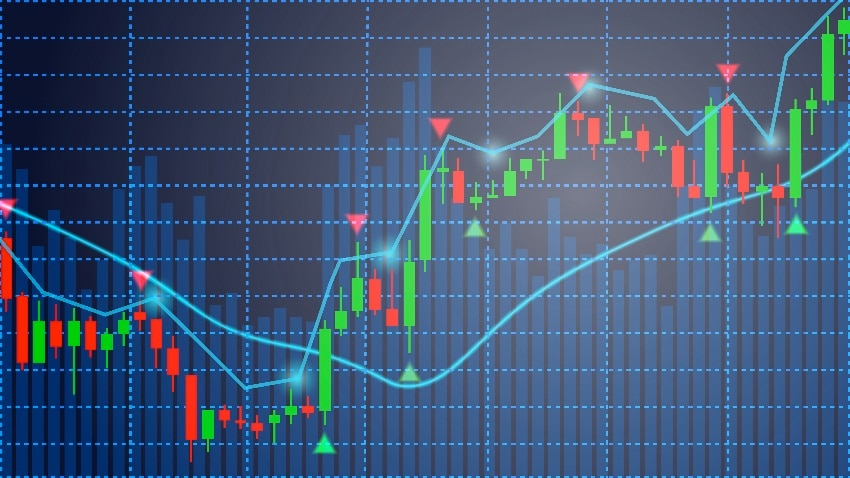3 Easy Steps to Roll Over Your TSP Into an IRA
Over 70 million Americans today have 401(k) accounts, making them one of the most popular types of retirement accounts Federal employees don’t have 401(k) accounts, but instead have the Thrift...
Precious Metals

Investors in any asset want their assets to appreciate in value. Being able to understand what causes their assets to appreciate in value is key to making an investment decision, and investing in gold is no different.
If you’re investing in gold, or in any other asset, you’re likely interested in long-term price growth. With gold doubling the performance of stock markets over the past 20 years, it’s an ideal asset for long-term investment. But being able to understand what affects the current gold prices is important to your decision to invest in gold.
Many people talk about “the price of gold” as though it were a single price and gold were a uniform product. But gold takes many forms, from coins to bars to jewelry, and its price can vary significantly depending on what form of gold you’re purchasing. Because gold is an internationally traded product, its price fluctuates over the course of a day, and its price also varies from country to country based on what currency it’s priced in on local markets.
If you plan to invest in gold, you need to know what factors affect the price of gold so that you can make an informed decision on when to buy and sell. That’s particularly important if you plan to add to your gold holdings in the future, and especially if your gold investment is intended to provide you with a steady source of income in retirement.
So, what affects gold prices? There are five key factors.
Familiarizing yourself with these five factors that affect gold prices can help you assess the gold market, gold prices, and help you make a decision on when to buy gold.

The primary factor affecting the gold price is demand for gold. Unlike most other metals, demand for gold is largely driven by jewelry and investment. The most recent data for gold shows that jewelry demand made up a little under 30% of global gold demand. Much of that jewelry ends up in countries like India and China, where individuals have traditionally seen gold jewelry, and not coins and bars, as a prime form of gold investment.
Demand for gold as an investment, whether in the form of coins or bars, currently forms over 50% of gold demand. Industrial use in technology products forms about 7% of demand, and most of the remainder of demand comes from central bank gold purchases, which in recent years have reached record levels.
One of the major factors in the growth in investment demand comes from gold exchange-traded funds (ETFs). While gold ETFs aren’t an ideal means of investing in gold, their rising popularity makes them a major driver of gold demand worldwide.
As you can see, there are numerous demand factors that affect the price of gold. And each of those gold-demanding sectors views gold differently and affects the gold price in various ways.
Even though gold has been produced for thousands of years, the vast majority of the gold ever mined remains in existence above ground. The best estimates are that nearly 200,000 tonnes of gold are currently held above ground.
Annual gold production totals no more than 2,500 to 3,000 tonnes per year, meaning that increases to the gold stock take place very slowly, certainly not fast enough to keep pace with growing demand. And with gold mining becoming ever more difficult and resource-intensive, primary gold production is expected to level off or even decline in the coming years.
Because of this, it’s not so much gold supply as the limited amount of gold supply increases that affects gold prices. With demand increasing every year and supply remaining constant, pressure on the gold price should remain steadily upward.
American investors view everything through a dollarized lens. The dollar is the world’s most important currency, in demand around the world and used on numerous world markets. But so many dollars have been created that the value of each dollar has fallen precipitously. Since 1913, the dollar has lost about 96% of its purchasing power, thanks to the Federal Reserve’s loose monetary policy.
When the Federal Reserve engages in money creation through quantitative easing, it further dilutes the purchasing power of each dollar. While most people may not pay attention to that weakening of the dollar, many investors are keenly attuned to it. And as the dollar gets weaker, they seek to invest in assets that maintain their value no matter how weak the dollar gets.
A weaker dollar affects the gold price by driving it upward. So, as the Federal Reserve’s monetary policy continues to increase the size of its balance sheet with newly-created dollars, the dollar gets weaker and the gold price increases. With the Fed stating its intention to continue creating new money in the future, that should affect the gold price positively in the coming months. And if a coming recession results in full-blown quantitative easing again, expect the gold price to be affected to an even greater degree than today.

Inflation is an increase in the money supply, and its result is a rise in prices. Higher inflation means that prices are rising faster, and in many cases they rise faster than salaries and wages.
Higher inflation also worries investors, as they fear that the rise in inflation will erode the value of their investments. As inflation rises, the purchasing power of each unit of currency decreases.
If inflation increases faster than the rise in wages or in the value of investments such as stocks, it impoverishes investors. Many investors start looking to invest in gold when inflation rates rise, which means that the inflation rate can be one factor that affects the price of gold.
Inflation expectations play an important role in affecting the gold price too. If investors expect higher inflation in the future, they’re more likely to want to buy gold, which has a history of protecting investors’ assets against inflation.
With the Federal Reserve having recently announced its decision to allow inflation to overshoot its 2% target, higher inflation could be in the cards. That’s particularly true if the Fed decides to actively stimulate higher inflation. There’s a real danger that the Fed could overshoot in its stimulus, creating trillions of dollars of money out of thin air and resulting in a hyperinflationary crisis.

One of the biggest drivers of the gold price is economic uncertainty. As investors become less and less confident about the health and strength of the economy, they look to protect their investments against loss. That’s particularly true when expectations of recession or depression rise.
Gold is known as a countercyclical asset, one which performs better when the economy begins to dip into recession. For decades it has played that role, protecting investor assets through tough economic times.
When the economy is strong and stock markets are booming, most investors don’t even think about gold. They’re too busy chasing gains in stock markets, trying to maximize the value of their investments.
Once things begin to look bad, however, especially once stock markets begin to fall, then investors start worrying about protecting their assets. That leads to an increase in demand for gold, which then affects the gold price.
We saw this during the financial crisis and its aftermath, when the price of gold began to really increase once the economy fell into recession. The gold price continued to rise in the aftermath of the crisis, as most investors were still wary of investing in overpriced securities.
Once the economy began to improve, the gold price leveled off and largely fluctuated within a relatively narrow range. But now that we’re in the middle of a trade war, a slowing economy, and on the cusp of a stock market crash, gold is once again breaking out and beginning to climb. The worse the economic data looks, the higher the gold price will rise.
Gold is a fascinating investment asset that every investor should know about. Whether you decide to head down to the coin store to buy a gold coin or two, pursue a gold 401(k) rollover, or establish a new gold IRA, you should educate yourself on all the factors that affect the price of gold.
Most investors who haven’t delved into the gold price and its history probably don’t know that gold has averaged annualized gains of 10.6% since the beginning of 2001, while the Dow Jones has only grown at 5.0% and the S&P 500 at 4.8%. Nor do they know that gold has outperformed stock markets on an even larger time horizon, since the closure of the gold window in 1971.
Gaining greater insights into the gold price, the history of the gold price, and how gold markets react to the economy can help make you a better gold investor. And it can help you understand what to expect from your gold investments, no matter what may take place in the economy.
Goldco is an expert in the precious metals investment sector and will provide you with the latest news and analysis on financial markets and economic issues that affect the price of gold so that you can learn everything you need to before you decide to invest in gold. And once you’ve made the decision to invest in gold, our experienced specialists are ready to answer all of your questions so that you’re fully informed before you make your first gold purchase. Review our gold IRA rollover guide or call us today to find out more about how you can benefit from investing in gold.

